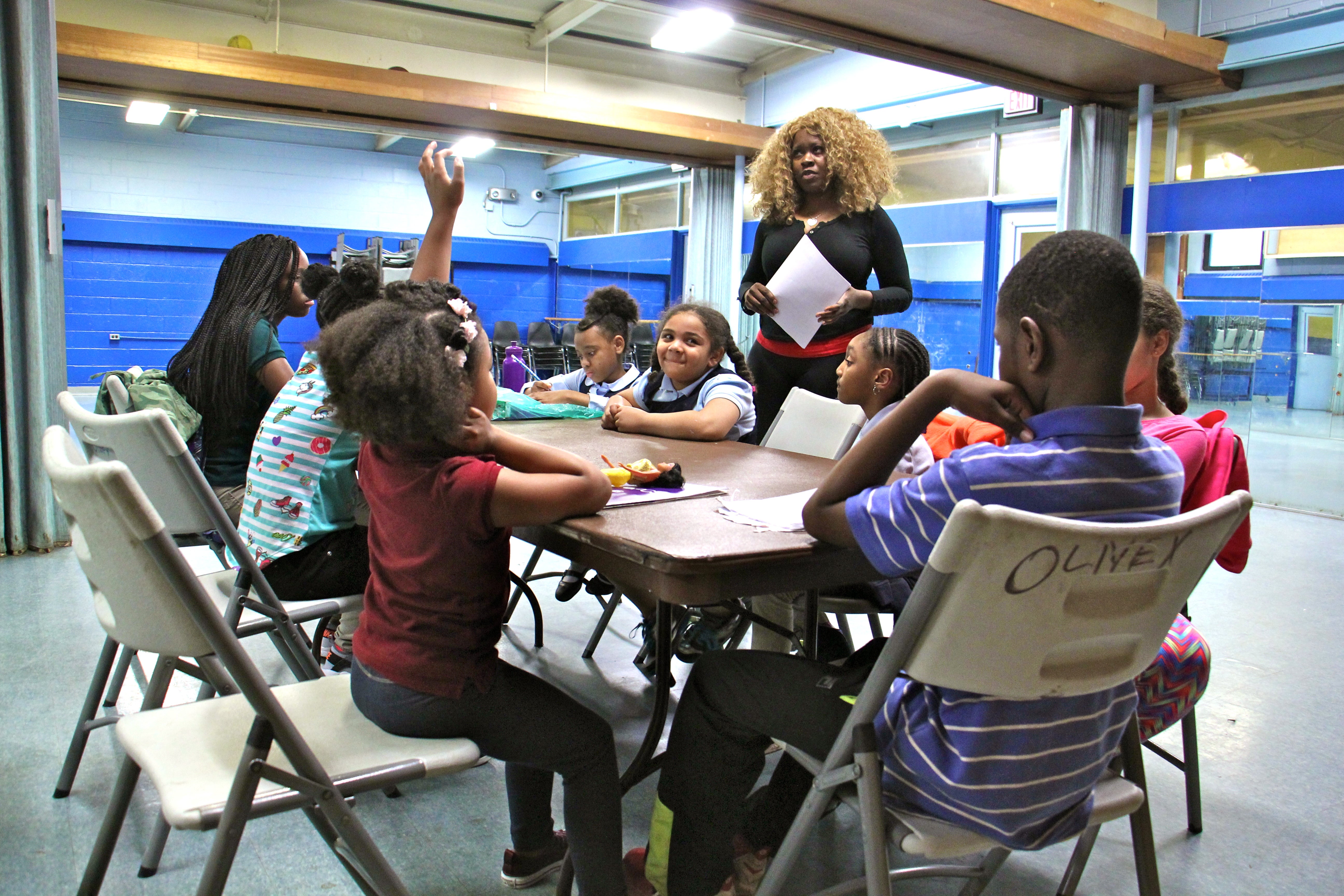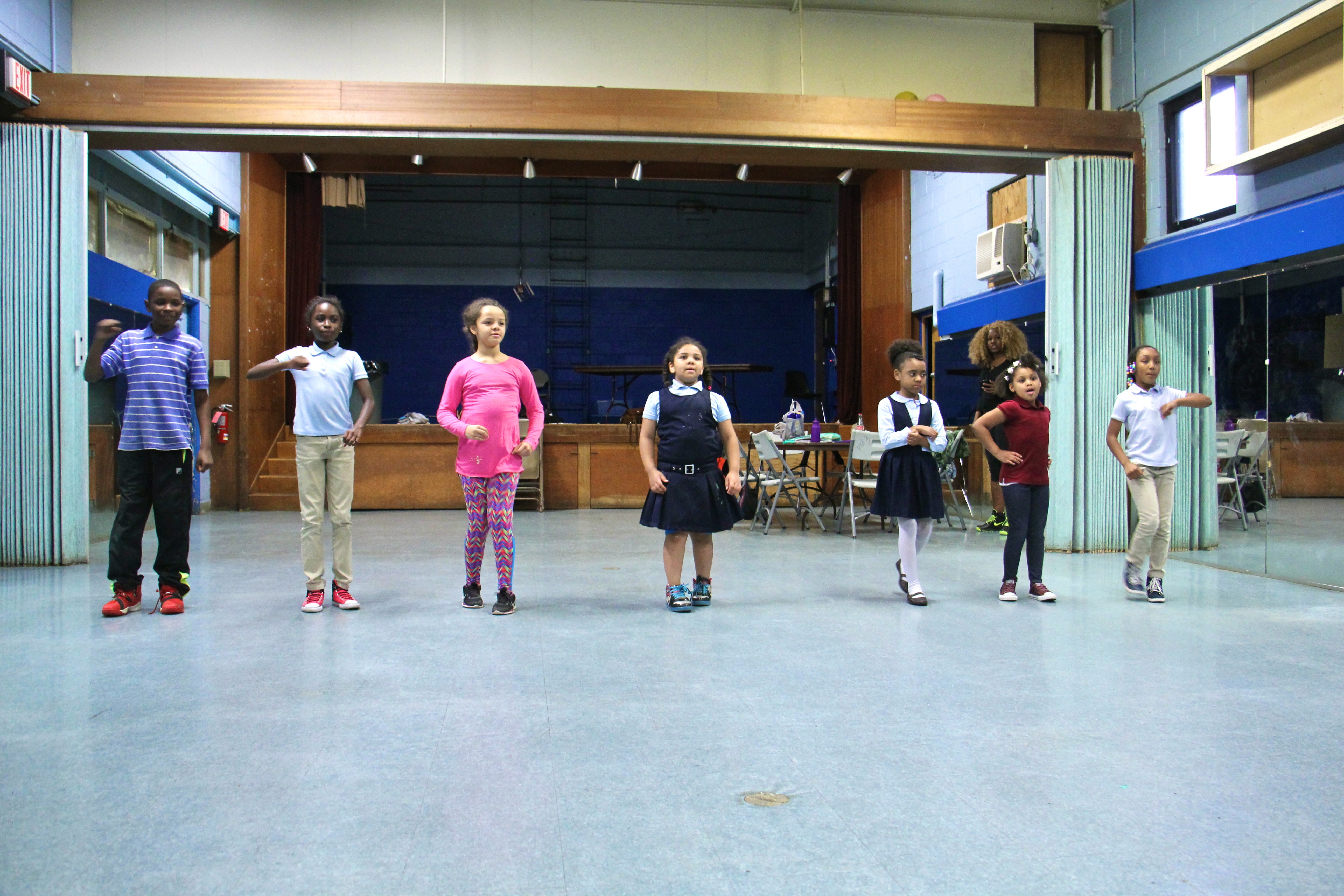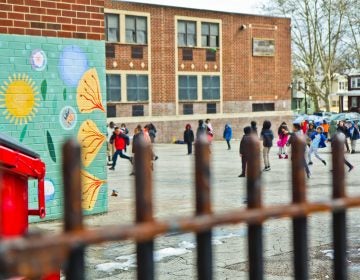At Olney Rec, Rebuild stokes imagination about what a rec center can be
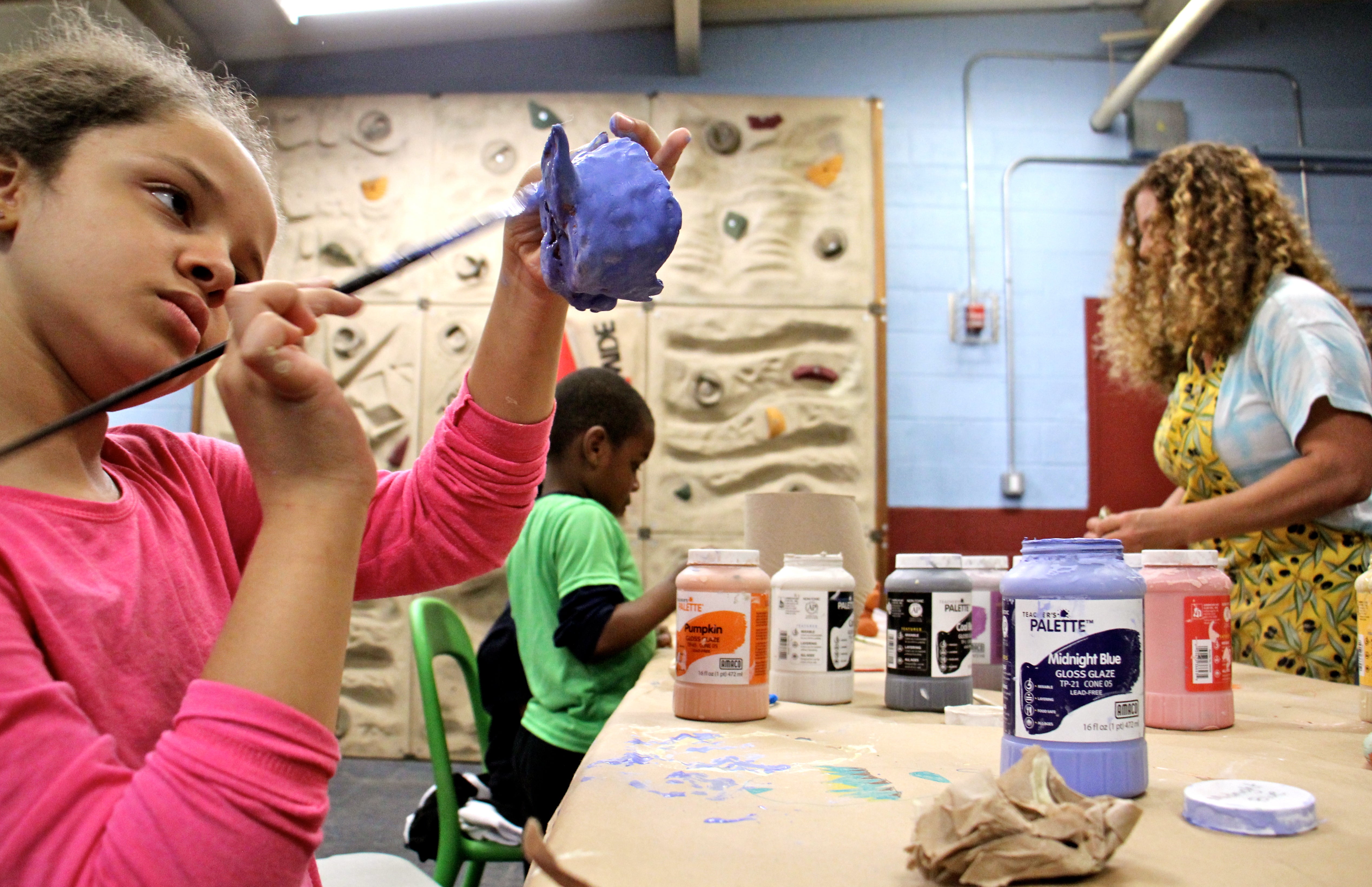
The playground at Olney Rec Center is bare bones. Its sprinkler, the site’s only water feature, backs up until liquid pools inside the building. When kids finish molding their clay-and-macaroni sculptures, there’s no kiln to fire them in. Instead one of the staff members at Olney, Emily Coleman, transports wet clay a mile to Fisher Park. Except when it’s summer. During the months when school’s out, arts camps occupy Fisher Park’s ceramics space, leaving Coleman to haul her youngsters’ bowls and paperweights to her personal studio.
The list is long when it comes to potential plug-and-fix solutions to the physical deficiencies at the center (missing air conditioning is another issue). But the most glaring sign that the rec center needs investment can’t be deduced from a patchy field or a leaky roof. “We’d offer afternoon senior programming, if we had anything to offer them,” says Coleman, a recreation leader trainee at Olney. “If we had something like a computer lab and library, we could have computer classes for seniors, because we don’t have any kids in the building until 3 [o’clock].” Later, Coleman adds, “We have all sorts of space, it’s just poorly used.”
It’s hard to miss Olney Rec, a hulking facility in one of Philadelphia’s low-crime, high-poverty neighborhoods. A lot of residents know it as the home of a stalwart youth-athletic program, the Olney Eagles. Last month, Mayor Jim Kenney took a tour of Olney Rec Center. It was the fourth facility he’s toured this year that could eventually be eligible for an overhaul as part of the administration’s $500-million Rebuild initiative to reinvest in parks, rec centers and libraries across the city.
While litigation surrounding the soda tax and political horse-trading over some of Rebuild’s finer details have gobbled up recent headlines about the project, the Mayor has barnstormed through several councilmanic districts to tour parks and rec sites where the list of needs runs long. Sites like Olney Rec remain strained thanks to physical and programmatic limitations, despite dedicated work from people like Coleman, the rest of the staff, the Olney Eagles, countless families, and the advisory council for the rec center. Persistent needs across the city’s network of civic assets are why Kenney is spending significant capital on Rebuild.
When politicians have spoken about the potential of Rebuild, it is easy to point to the physical needs of a facility, like a faulty boiler, but programming is just as much a part of the puzzle. Rebuild also presents a pivotal opportunity to shift how existing and would-be users view their local rec center as a public institution, and how it might change to better serve neighbors.
Over the last few years, a slew of think pieces and white papers have examined how cities are rethinking their old school buildings, churches, libraries, and parks. The Reimagining the Civic Commons initiative, which was piloted in Philadelphia, aligns with this paradigm. But much less attention has been devoted to reimagining rec centers — which, in Philadelphia, are twice as plentiful as libraries — at least until now.
“The [Free] Library has done an excellent job, especially over the last 10 years or so in offering myriad services beyond just taking the book out,” says George Matysik, executive director of the Philadelphia Parks Alliance. “And I think recreation centers are poised to do a lot of that same type of work.”
As the promise of Rebuild developing its initial crop of shovel-ready projects by the end of the year seems less likely, one silver lining has been the extended runway for communities to thoughtfully consider how they would like to see their public facilities change, prior to any sites being selected or money being awarded for improvements. In recent months, the Parks Alliance has been working to build up participation in rec center advisory councils. It’s a different tact than the Alliance has traditionally taken as an advocate of our parks system. In a sense, it is aiming to empower new faces to become place-based advocates for parks and rec sites, in lieu of the Alliance focusing its efforts on a broader, citywide platform. The Alliance has been hosting dinners with advisory councils, inviting residents who live nearby sites to get familiarized with the potential of Rebuild, and begin the conversation. Additionally, Matysik says the Alliance has started bringing together RCOs, houses of worship, representatives of political offices, and local businesses to the table, along with these re-energized advisory councils, in anticipation of Rebuild.
“Our goal is when [Rebuild director] Nicole Westerman comes knocking on the door saying ‘Rebuild’s here, we’re ready to build your center,’ we want to make sure the community is prepared for that with a laundry-list of programs that they would like to see developed.”
The work of the Alliance, which publicly supported the soda-tax legislation (from which some revenue is earmarked for Rebuild), supplements the administration’s community engagement strategy that in part aims to “make your community more whole,” said Managing Director Mike DiBerardinis, when he spoke to PlanPhilly last month. It also dovetails with the administration’s hopes to inspire holistic thinking around Rebuild sites.
“When we go in and talk, we start the conversation by asking, ‘What does the community need?’ We don’t ask ‘What does the rec center need?’ because then people are probably going to say that they need more basketball hoops,” says Matysik. “In almost every case, it leads to [people wanting] more education programs, more job-training programs, language-training programs. It’s all about the wrap-around services.”
Olney was one of the first centers the Parks Alliance focused on. The idea of pushing for senior programming, for example, was not born out of a wish-list from staff members at the center, rather, knowledge gathered through community engagement work with the recently re-launched advisory council.
“I need Rebuild for education. I don’t need Rebuild to play basketball, because everybody is not going to play basketball,” says Lori Gray, president of Olney Rec’s advisory council. “You could come to Olney Rec, put some banging programs in there that people would want to come all over to put their kids in.”
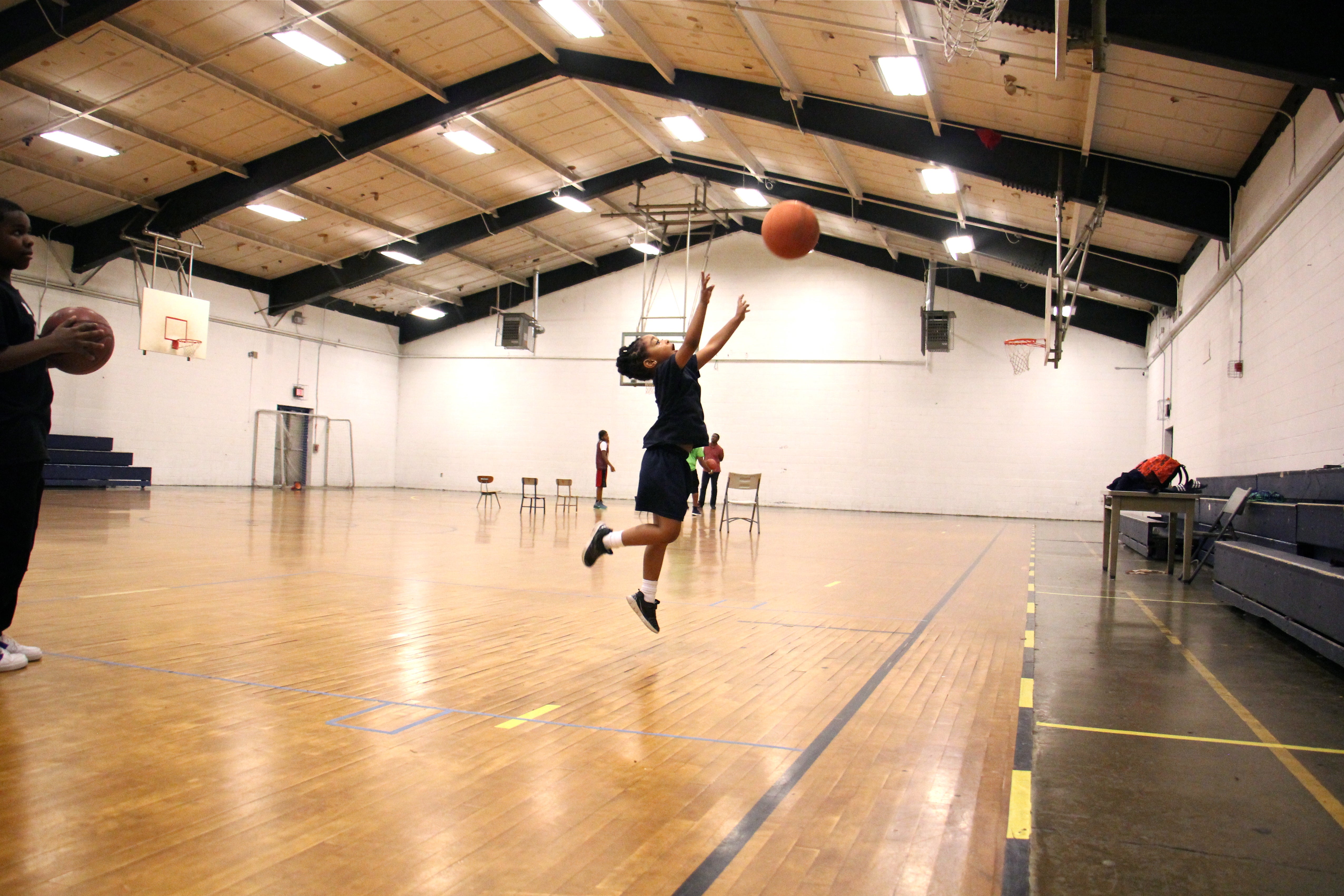
Sitting on a 2.3-acre plot, the rec center has plenty of space that could be transformed in any number of ways. Coleman’s makeshift ceramics classroom, occupying a onetime storage closet, has to be broken down each week, mostly because the tables are needed for programming elsewhere in the building. There’s always been ample room, but neither the money nor time for strategic planning to truly reshape the center.
But what if, Matysik muses, Philadelphians began to think of rec centers in new light, so that it wouldn’t be uncommon to just find a basketball gym and a computer lab at a rec center, but also, a mental-health provider — something exceedingly rare in Olney — housed inside the facility? “There’s not a single mental-health provider in that entire zip code [19120],” says Matsyik. “In addition to our libraries, our parks and recreation centers are the only spaces that we have that have no barriers to entry. Anybody can show up and get services provided to them.”
Ramping up the activity at advisory councils across the city also has the potential to bolster more than Rebuild projects. The hope is that the efforts will pay dividends well beyond the Kenney administration, with the advisory council playing a role in fundraising and being a community advocate for the site. “Most of the funding that the rec centers get for programs is by charging for those programs,” says Matysik. If you’re Fox Chase Rec Center in the Northeast, charging $1,000 for summer camps can be the norm. But in an area like Olney, that’s not possible. And it leads to a vicious cycle of underfunding. “When you can’t charge, then you have less revenue to spend on new programs.”
If, buoyed by a Rebuild investment, a broader section of Olney comes to frequent the rec center site, not just sports-playing children and their parents but also seniors and first-generation families, then there will be a chance to make sure it never falls into squalor again. It’s not as though Olney, which has a high homeownership rate, is lacking civic participation. “You see our civic engagement is high in the voting process, but not in this sense” says Councilwoman Cherelle Parker, who represents Olney. “Our hope is that going through this process [Rebuild], we will enhance community engagement and participation … This facility should be the nucleus of community exploration and gathering.”
How Olney Rec Center will look a year or two from now remains far from determined. After all, it hasn’t been picked for Rebuild — no sites officially have — and the funding for Mayor Kenney’s signature project hasn’t reached the finish line. But people are starting to think more imaginatively about what the center could be, one of the principal hopes of the administration. In fact, Councilwoman Parker is thinking so big, a brand-new Olney Rec Center is on the table. “We’ve talked about the need for a total rebuild,” she said. Asked to clarify if that’s a metaphoric overhaul or if she sees a potential demolition and reconstruction of the site, Parker didn’t equivocate. “I am not an architect or an engineer, but we are talking about demolishing what is there and doing a total rebuild of the facility. That’s what I envision.”
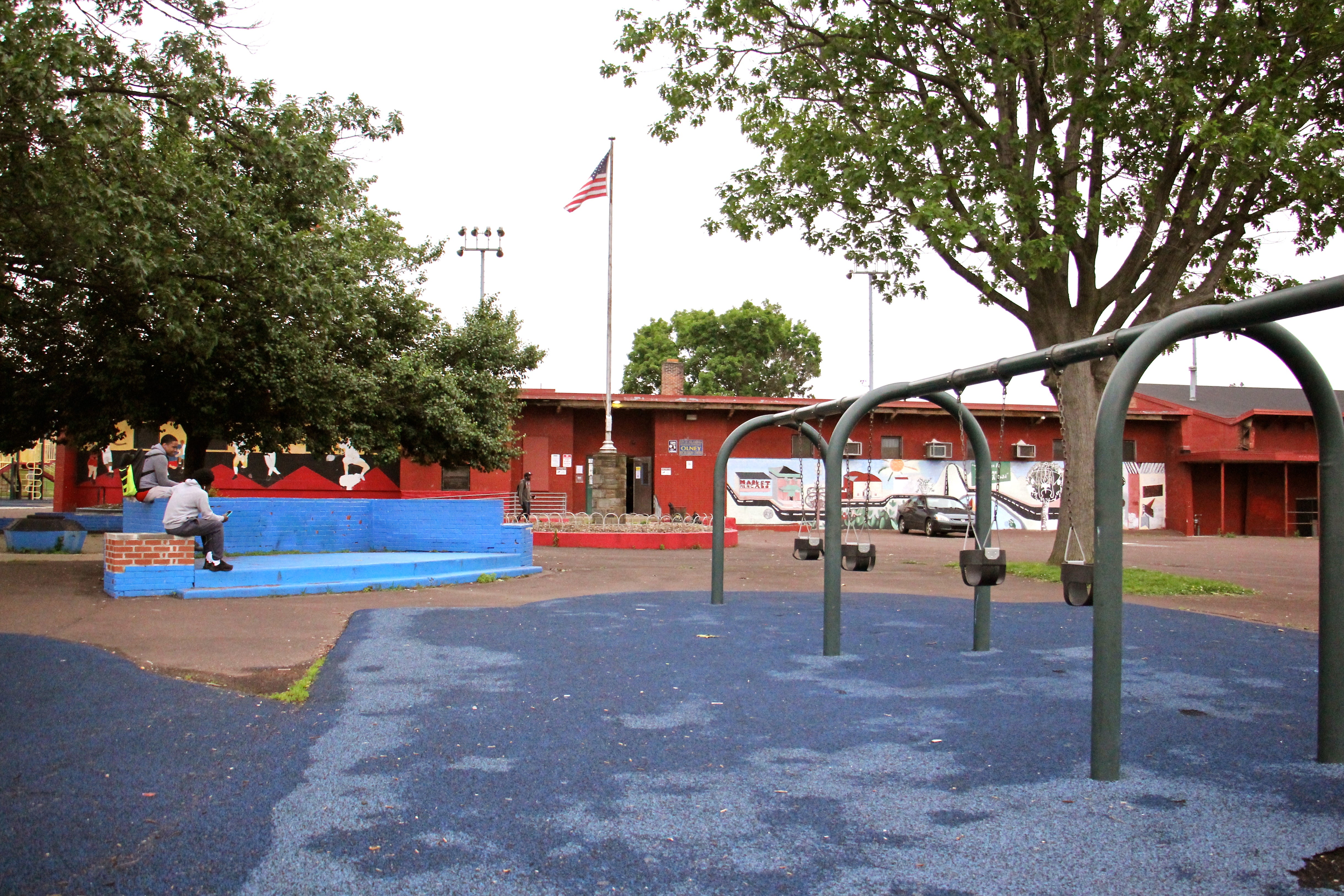
WHYY is your source for fact-based, in-depth journalism and information. As a nonprofit organization, we rely on financial support from readers like you. Please give today.



